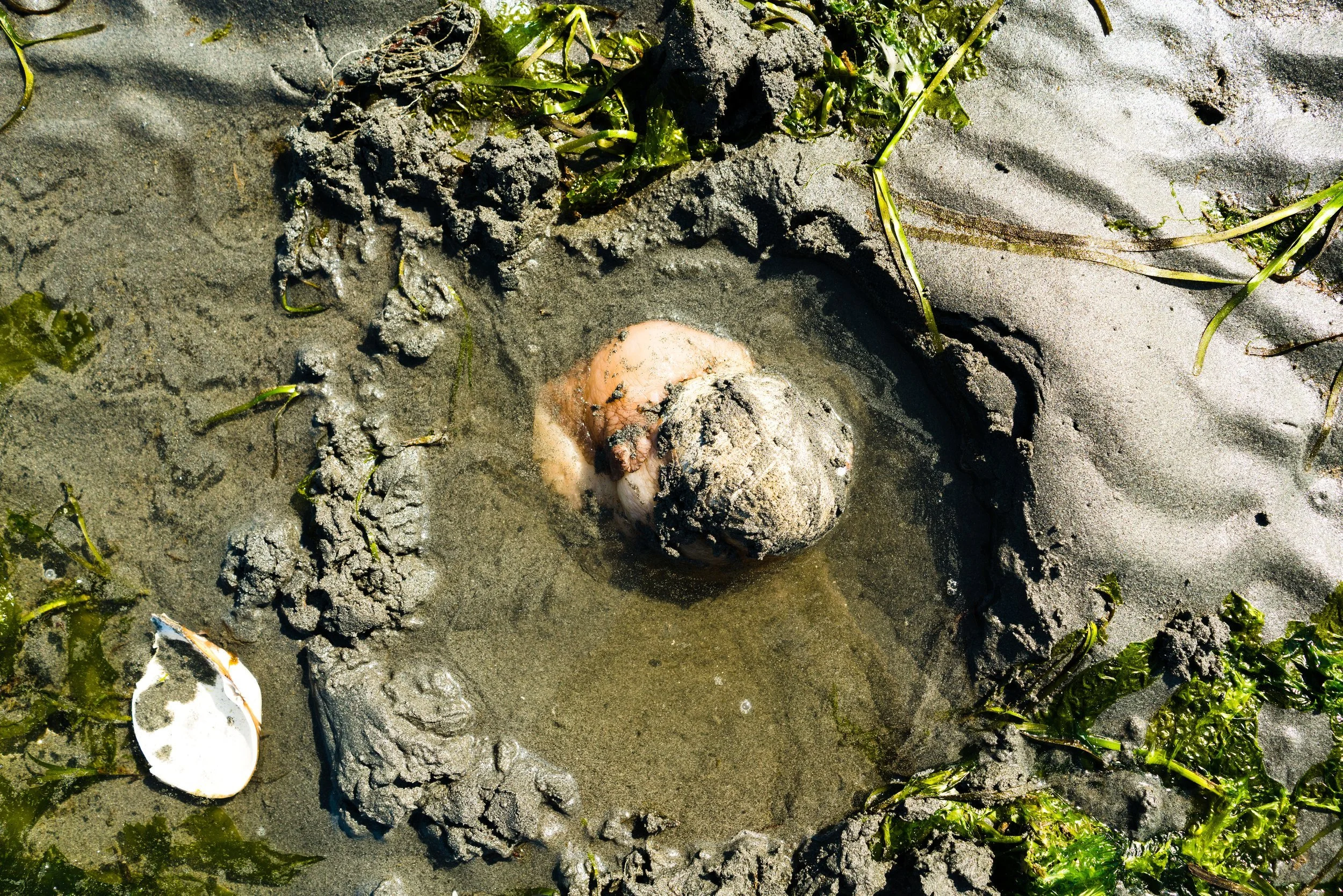Close Encounters of the Snail Kind: The Fascinating Lewis’ Moon Snail
Story + Photography by Sara Montour Lewis
A Lewis’ moon snail on the sandy shores of Puget Sound during low tide (Photo: Sara Montour Lewis)
This photograph is available as a print in our shop!
Walking around Puget Sound beaches at low tide you would be forgiven if you thought you had suddenly stumbled into a bizarre rubber plunging dumping grounds. Before you do your part in cleaning up the beach make sure you take another look because you may have found the habitat of one of the largest living marine snail on earth: the Lewis’ moon snail that lives right here in Puget Sound. Those bizarre plunger-looking things strewn about are actually egg collars holding the next generation of these fascinating gastropods.
A Lewis' moon snail with its egg collar in an eel grass bed during low tide at Picnic Point in Edmonds, Washington (Photo: Sara Montour Lewis)
To create these strange egg cases the female moon snail glues grains of sand together with mucus, lays fertilized eggs on top of that layer, and then seals the eggs in with another layer of the sand + mucus concoction.
A Lewis’ moon snail digging into the sand in Edmonds, Washington. (Photo: Sara Montour Lewis)
A Lewis’ moon snail with its foot extended. (Photo: Sara Montour Lewis)
Lewis’ moon snails are the largest living marine snails with a shell diameter of nearly six inches and a huge foot that can extend to be a foot long, doubling its shell size, or shrunk completely by expelling water, allowing it to fully seal inside its shell.
(Photo: Sara Montour Lewis)
(Photo: Sara Montour Lewis)
Where to find moon snails around Puget Sound:
These snails are generally found in the sandy intertidal zone around Puget Sound during low tides. Along with scouring the beach for their tell-tale egg casings, another sign that you’re in their habitat is spotting clams on the beach with a perfectly circular hole right at the foot.
(Photo: Sara Montour Lewis)
(Photo: Sara Montour Lewis)
Hidden inside the bulbous foot of the moon snail is a sharp radula. When a moon snail smells its prey it engulfs it it with the foot, locking it in place so it can use its radula to bore a hole into the shell of the clam over an impossibly slow time period of up to four days. This event would take even longer, except that the moon snail has one other trick up its sleeve (foot?); it also excretes hydrochloric acid and other enzymes to help dissolve the thick clam shell.
Once the hole is complete the foot forms a siphon to suck the clam meat out through the hole and it discards the shell for confused beachgoers to spot and wonder how such a perfectly shaped circular hole could have been created by nature.
Have you spotted a moon snail on the shores of Puget Sound? Let us know in the comments below; we would love to hear your story!
(Photo: Sara Montour Lewis)














